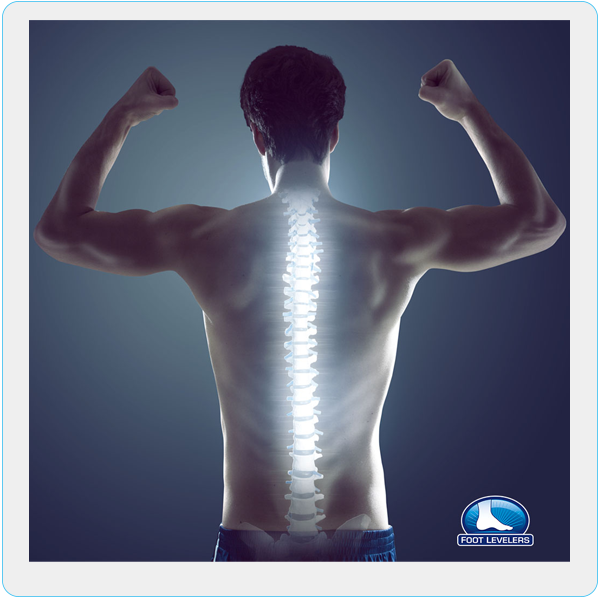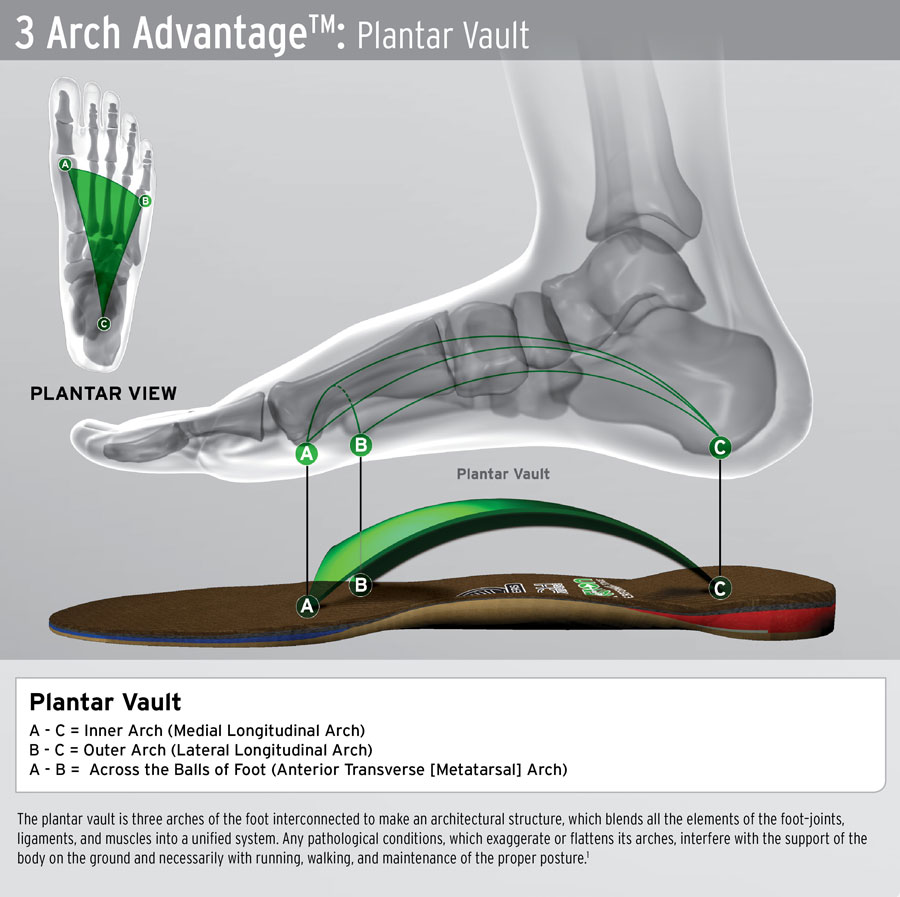Custom Orthotics Make All the Difference

Custom orthotics simply work!
Our process results in the highest-quality, most comfortable customized orthotic on the market.
American River Chiropractic and Winters Chiropractic’s custom orthotics are individually designed for YOUR feet – helping achieve a balanced foundation and stabilized pelvis. Our custom orthotics are handmade for your unique feet based on a personalized 3D scan and your doctor’s exam.
Only American River Chiropractic and Winters Chiropractic’s customized orthotics support all 3 arches of the foot, which make up the plantar vault. Since our orthotics are custom-made by hand from scans of your feet, no two pairs of custom orthotics are alike!
Innovations like 3-Arch Support, and high quality materials and scanning technology, enable a uniqueness to each orthotic – shaped and crafted to your individual feet – resulting a much higher-quality orthotic that also happens to be extremely effective in reducing low back pain and other forms of pain typically related to foot conditions.

1 Year, 100% Money-Back Guarantee: Our custom orthotics are manufacturered by Foot Levelers. All orthotics are guaranteed for 1 year and covers materials, workmanship and your satisfaction.

Supporting Health for the Whole Body: American River Chiropractic and Winters Chiropractic’s custom orthotics help more than your feet! Our stabilizing orthotics bring health and healing to the whole body by balancing the musculoskeletal system.

Made in the U.S.A.: American River Chiropractic and Winters Chiropractic’s custom orthotics are designed and hand-crafted by Foot Levelers at their headquarters in Roanoke, VA!

3 Arch Advantage™: If any one feature was responsible for our orthotics being the best, the 3 Arch Advantage™ is it. American River Chiropractic and Winters Chiropractic’s customized orthotics support all 3 arches of the foot, which is the only way to properly address total body wellness from the ground up.

Precision Technology: American River Chiropractic and Winters Chiropractic’s 3D foot scanning technology is leaps and bounds more advanced and precise than competitors. This level of precision is extremely important in acquiring an accurate scan of your foot. The better the scan, the better the orthotic fits your foot – which translates to a more comfortable and more effective orthotic!

The Science Behind Stabilizing Custom Orthotics
Stabilizing Custom Orthotics were developed by a Doctor to treat the body as a functional unit, starting with the feet. Custom Orthotics add power to your step by supporting the three arches in each foot to provide a balanced foundation and protect and support through all phases of gait. The Gait Cycle System® is patented and is only available from Foot Levelers.
US Patent Number 6,510,626
Gait Cycle System®+DRS™

3 Arch Advantage™: Support for your 3 Arches
The feet are the foundation of the body. They provide the necessary stability to perform daily activities by supporting the weight of the entire body using a strong, 3-arched bond called the plantar vault.
The plantar vault provides numerous benefits:
- Balances to the body
- Propels us forward
- Safely absorbs heel-strike shock
- Adapts to walking and running stresses.

The Plantar Vault

The foot is made up of 3 bony arches. These 3 arches in the foot are what keep the body balanced:
- Medial longitudinal arch (A–C)
- Lateral longitudinal arch (B–C)
- Anterior transverse (metatarsal) arch (A–B)
Together, these 3 arches form an extremely strong, supportive “plantar vault” that distributes the weight of the entire body.
Arch Collapse
Over time, one or more of your arches will weaken due to gravitational pressure. This process is completely natural, but can be expedited by injuries, a short leg, improper posture and naturally weak ligaments and tendons.
Once an arch or multiple arches have weakened, the weight of the body will shift away from the weakened arch and start to apply pressure and stress to the other arches, causing pain and other symptoms throughout the body.

Custom 3 Arch Support
American River Chiropractic and Winters Chiropractic’s custom-made orthotics are designed to provide the best possible support for all 3 arches of your feet:
- Individually crafted based on 3D scans to bolster the arches in your feet
- Prescribed ony through American River Chiropractic and Winters Chiropractic’s to ensure you get the best possible orthotic
- Available in a variety of styles and builds to suit your lifestyle and needs
Custom orthotics are designed to provide both the instant “ah” factor that over-the-counter orthotics like to market, and the actual needed support for your arches that will relieve pain now and prevent pain later by compensating for any and all of your weakened arches to correct your posture.
Orthotics and the Foot/Spine Connection
Static support
During a standing posture, the alignment of the arches in each foot has a significant impact on the position of the legs and pelvis. When the arches are low and/or pronating excessively, the knee will rotate. A research study using radiographic measurements found that custom-made, flexible orthotics can significantly improve the alignment of the arches when standing.
Dynamic support
During gait, the foot must permit a smooth transfer of the body’s center of mass over the leg to conserve energy and keep the work expenditure to a minimum. This requires an orthotic to be flexible yet supportive, and orthotic designs must consider:
- Weight and intensity of forces
- proper movement and function of the foot
- support of all three arches to prevent eventual arch collapse
Postural benefits
Improving foot alignment can help maintain knee, hip, pelvis, and even spinal postural alignment. Preventing hip, knee, or spinal joint degeneration requires the additional support and shock absorption provided by orthotics. And a pelvic or spinal tilt or recurrent subluxations will often respond rapidly to orthotic support.
In Layman terms, American River Chiropractic and Winters Chiropractic’s custom orthotics from Foot Levelers are excellent products that work well at balancing the musculoskeletal system – enabling a healthly lifestyle.
Plastic Deformation
Plastic deformation happens when the soft tissue of the foot stretches over time, causing fallen arches and affecting the Foot/Spine Connection.

Soft tissue in the arches is constantly under stress.

Over time, that stress results in fallen arches (plastic deformation), leading to knee, back and even neck pain.

By supporting the feet, orthotics help alleviate pain throughout the body.
Why Rigid Orthotics are Bad for the Body
by Dr. Brian Jensen
Flexible (soft) custom orthotics provide both comfort fit and support.
There seems to be an ongoing debate when it comes to evaluating the feet for making orthotics. Which is better, weight bearing ornon-weightbearing casting or scanning? The method you choose depends on several factors. What is your desired outcome, a flexible custom orthotic that supports optimal gait dynamics or a more rigid orthotic that limits movement to treat an orthopedic problem?
They both have their place in patient care but in the Chiropractic practice, a vast majority of patients fall into the category of needing a flexible orthotic that allows the foot to compress and absorb shock but at the same time, block excessive pronation. It should also facilitate efficient, symmetrical joint function of the lower extremities while enhancing the neuromuscular response and postural tone.
In the early days of orthotic production, podiatric orthotics attempted to manipulate the position of the foot with rigid materials based on molds of the foot taken in a non-weight bearing position. Prolonged use of this type of orthotic produced low back pain in many patients because they prevented the normal amount of subtalar pronation in the gait cycle. The foot needs to be able to flatten a bit to absorb the shock forces. This dynamic movement of the foot also feeds proprioceptive input into the brain which is important for normal motor control responses that affect gait, posture, and balance. A lack of movement in the foot from too rigid of a device can effectively cause a dysfunctional foot contributing to abnormal weight bearing, joint inflammation, tissue damage and ultimately injury or degeneration.

Excessive pronation has been linked to low back pain, knee injuries, weak posture, as well as a myriad of other mechanical stressors. I personally measured the amount of navicular drop in thousands of patients during my career and the thing that stands out the most to me is that nearly everyone pronates asymmetrically. This lends itself to biomechanical stress that affect the feet, knees, hips, pelvis and spine and the asymmetry can only be measured when the foot is in the functional position of full weight bearing. Creating a cast or mold of the foot in a non-functional position ignores the importance of the neurological feedback mechanism of proprioception, which is our perception or awareness of the position and movement of the body.
The proprioceptive response is what engages the muscles of the lower extremity for gait and creates the postural tone, which keeps us upright. Interfering with that system by preventing the foot from moving through the full range of motion has global effects on the body that can contribute to postural distortions affecting even the cervical spine and upper extremities. The idea that the foot can be manipulated into an ideal orientation with a rigid device based on a non-functional position of the foot is mechanistic at best and ignores the complexity of functional movement.
When you evaluate a patient’s functional movement, you can easily differentiate how well they perform the functional squat test with no orthotic, a rigid orthotic made from a non-weight bearing evaluation or a flexible orthotic made from a full weight bearing cast or scan. The differences in biomechanical function of the lower extremity are easily documented, and the patient in many cases can detect significant changes in ease of movement, flexibility and even pain in the knees and low back.
The use of rigid orthotics in functional movement assessment often reveals inefficient movement patterns from an inhibited proprioceptive response because the foot is kept in a position that altered form the position it would naturally assume in full weight bearing. Orthotics that are manufactured based on the “theory” that the foot should be supported in position of subtalar neutral or as one manufacturer claimed, in the position that represents the arch in its highest point are flawed in that they don’t allow the foot to be the dynamic, shock absorbing proprioceptive machine that it is.
To get an optimal patient response to orthotic use, the orthotic must allow the nervous system to engage the complexities of movement, balance, coordination and strength. Non-weightbearing assessment and the rigid or semi-rigid orthotics that are made from that assessment often find themselves tucked away in a sock drawer because the reality is that they inhibit the proprioceptive response negatively affecting pain and movement.
Dr. Brian Jensen is a 1987 graduate of Palmer Chiropractic College. Dr. Jensen owns Cave Spring Chiropractic in Roanoke, Virginia. He has shared his experience with other doctors in continuing education seminars over the past 13 years in the U.S. and abroad.
